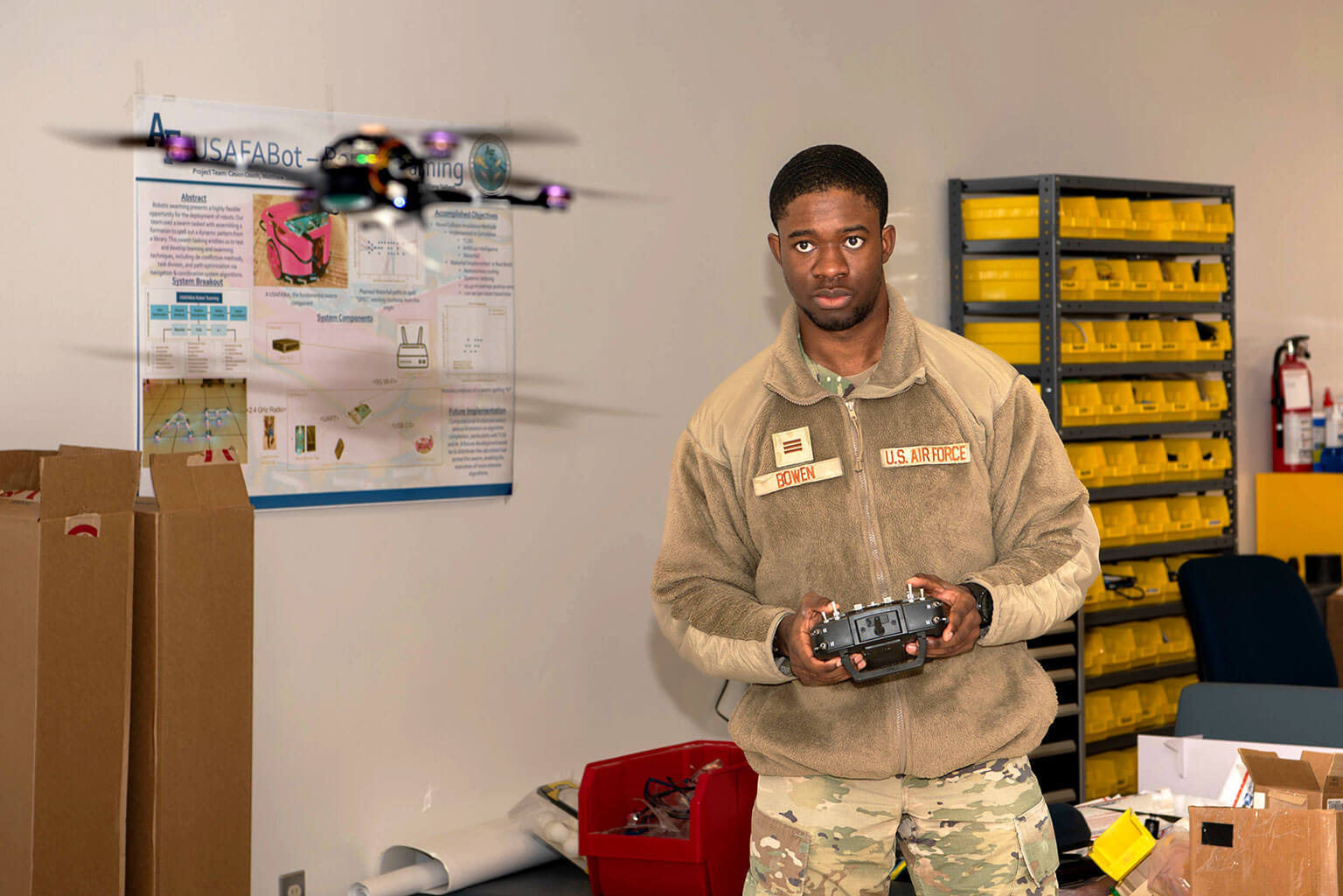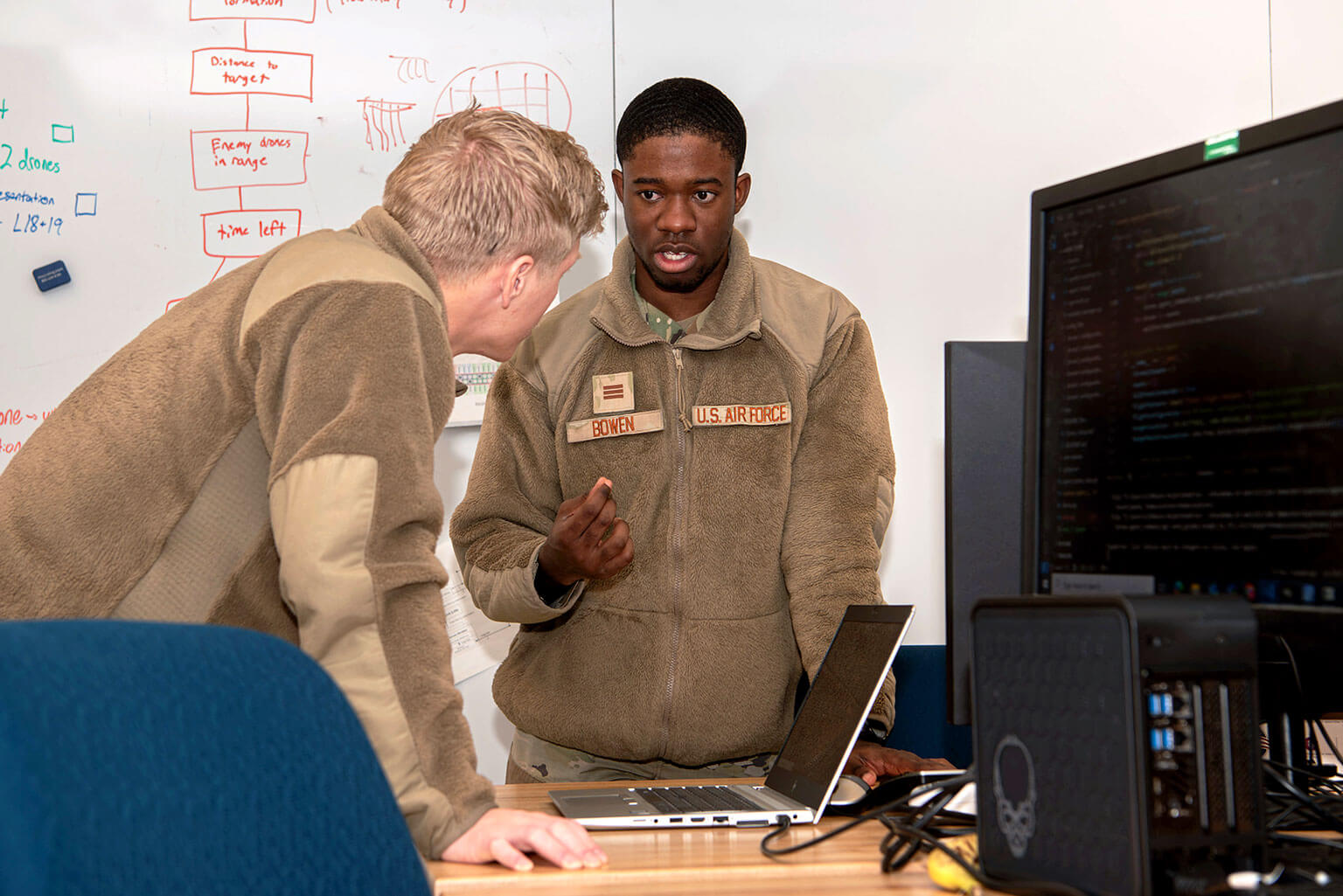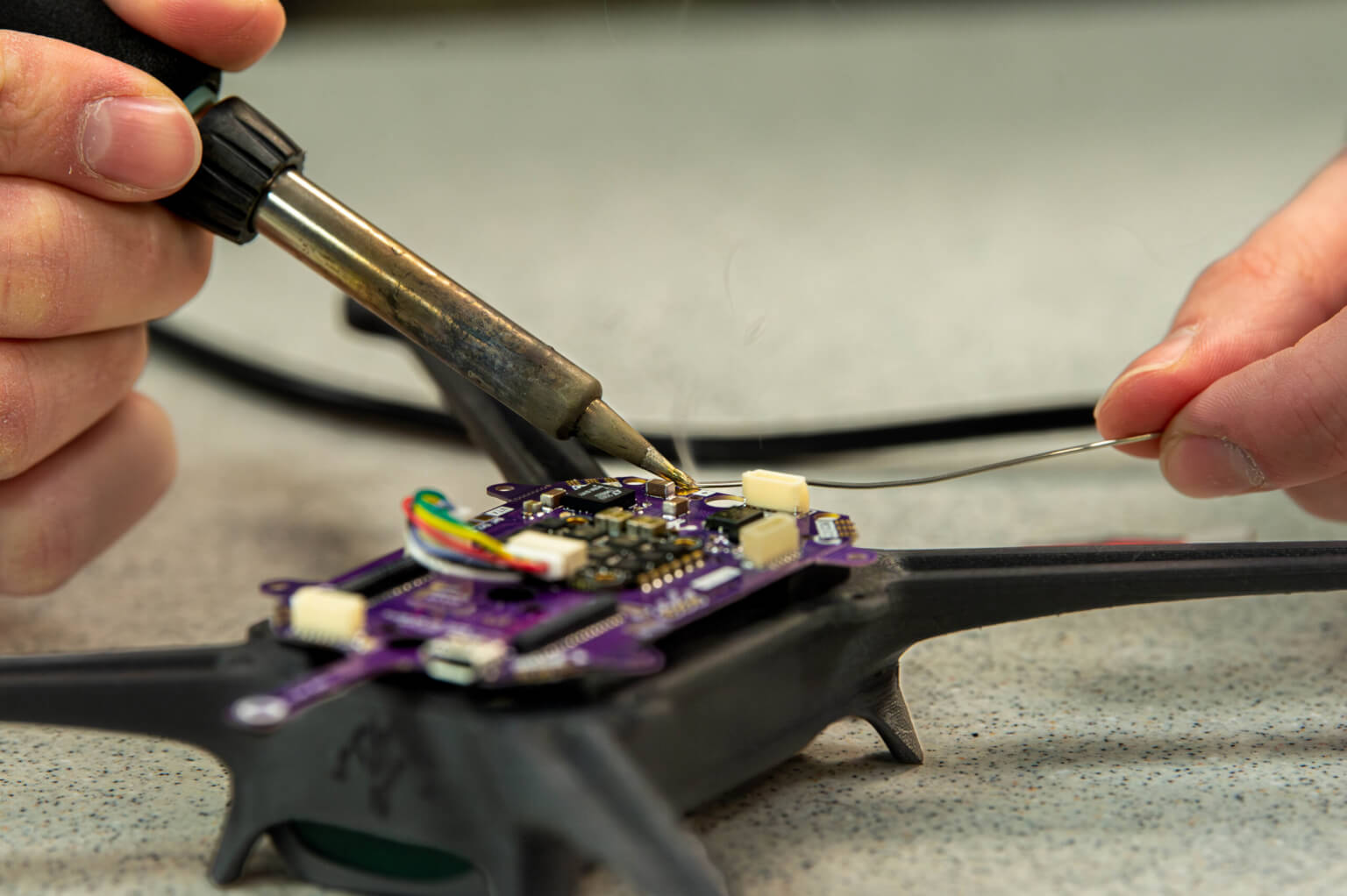Cadet capstone centers on robotic swarming

Cadet 1st Class Jabari Bowen test-flies a drone in the Department of Electrical and Computer Engineering March 21, 2024. Bowen is part of a team working on a robotic swarming cadet capstone research with a leading aerospace and global security company. (U.S. Air Force photo by Dylan Smith)
By Randy Roughton
U.S. Air Force Academy Strategic Communications
U.S. AIR FORCE ACADEMY, Colo. – Three cadets carefully observe their drone swarm’s flying patterns in the Department of Electrical and Computer Engineering. The three drones are cadet-built, modified and tested.
Cadets 1st Class Jabari Bowen, Mason Rolph and Marcus Sander will add at least three more drones to their robotic swarming capstone project before they test them in a demonstration with a leading aerospace and global security company in late April. The company asked cadets to build a swarm for the testing of their own drone capabilities.
Putting the pieces together
Rolph handles the coding for the drone’s behavioral and movement patterns. Sometimes, the code can be tricky. That’s where his patience and pride in solving difficult problems comes in, Rolph said.
“I work a problem until I finally solve it,” Rolph said. “I enjoy the code because it’s like a puzzle. I’m the type of person who can’t put a puzzle down until I solve it. That’s how a lot of my classmates are. We keep trying different things until we get the problem solved.”
A valuable research experience
Cadets gain valuable research experience from capstone projects such as the robotic swarming expirements. Many cadets later work for organizations such as the Air Force Research Laboratory and take their experiences into their U.S. Air Force and U.S. Space Force careers.
The rapidly growing swarming technology and the cadets’ year-long capstone project could have implications for the Air Force and Department of Defense in the defense and surveillance of adversaries’ drones, Rolph said.
“This work is integral to linking the real Air Force with the emergence of more unmanned aircraft,” Rolph said. “We work on how to control and use them more effectively. Swarming is a highly emerging technology. We can mimic how potential adversaries could use their swarms and help develop our nation’s defense.”

Cadets 1st Class Mason Rolph and Jabari Bowen discuss modifications for the drone in the Department of Electrical and Computer Engineering March 21, 2024. The seniors’ cadet capstone research team will conclude with a demonstration in April with a leading aerospace and global security company. (U.S. Air Force photo by Dylan Smith)
Robotic swarming technology
Swarm robotics involves multiple robots working together through simultaneous localization and mapping, said Dr. Stan Baek, a Department of Electrical and Computer Engineering professor and capstone project mentor. The approach is based on artificial swarm intelligence and the biological studies of insects where swarm behavior occurs.
“The idea of this swarm is the multiple robots working together,” Baek said. “Each robot has its own set of measurements, perceptions and decision-making capabilities. We fuse all of them to make the best decisions for all the robots.”
The cadets plan to have between six to 10 drones ready for a demonstration showcasing intelligence gathering, detection and evasion of the company’s aerial swarms, Rolph said. As the aggressors for the demo, their mission is to reach a target and maintain control of the area, he said.

Cadet 1st Class Marcus Sander modifies a drone in the Department of Electrical and Computer Engineering March 21, 2024. Sander is part of a robotic swarming cadet capstone research team with a leading aerospace and global security company. (U.S. Air Force photo by Dylan Smith)
Advice for students interested in studying robotics
Baek offers simple advice for high school students interested in working with robots: give particular attention to STEM subjects, especially mathematics, but focus on the problem-solving process rather than just the solution.
“If you are given a problem to solve, how do you approach the problem?” Baek said. “Analytical skills are the most important skills in engineering, particularly robotics. Apply the conceptual skills and math and science to real-world problems.”
For more photos of the robotic swarming cadet capstone project, see Flickr.